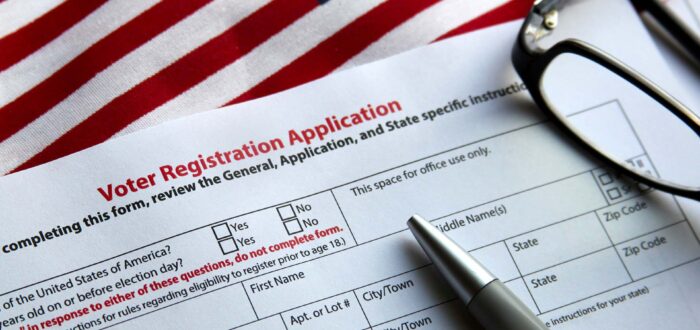

The Ultimate Guide – How to Plan a Move for a Stress-Free Experience
Posted in How-to on January 16, 2024
Embarking on a relocation starts with understanding how to plan a move effectively. From the initial stages of organizing and packing to the final steps on the big day, this comprehensive guide covers all essential aspects. Whether it’s your first move or you’re a seasoned mover, these tips and tricks will help you navigate the complexities of relocation with ease and confidence.
How to Plan a Move?
To plan a relocation efficiently, start by creating a detailed timeline and a relocation checklist several weeks in advance. First, declutter your home and organize your belongings to simplify packing. Next, gather necessary supplies like boxes, tape, and bubble wrap. Hire a reliable relocation company or arrange a relocation truck if you’re shipping boxes on your own.
Notify important parties like your employer, bank, and utility providers about your change of address. Pack systematically, room by room, labeling each box with its contents. Lastly, prepare an essentials box with items you’ll need immediately upon arrival. Following these steps ensures an organized and smoother relocation to a new state.
Setting the Foundation for Moving Across the Country – The Early Stages of Planning
Choosing the right time for a relocation is crucial. Consider work, school schedules, weather, and housing market trends. Those relocating with kids often prefer summer to align with school breaks, while others might opt for off-peak seasons like fall or spring for lower costs. Assessing these factors is key to a smooth and stress-free transition.
Create a Realistic Timeline and a Moving Checklist
How to plan moving like a pro? A successful relocation requires a realistic timeline and a thorough relocation to-do list. Prioritize tasks like hiring movers, packing for a move, and updating your address. Set deadlines for each step and use the checklist to monitor progress. Don’t forget to declutter, acquire packing supplies, and manage utility setups. This organized approach eases the entire process.
Moving Budget Planning – How to Estimate Costs and Save Money
Planning to move out of state involves organizing your relocation budget by estimating costs and finding savings. Gather quotes from movers and account for packing materials, insurance, and travel. Save by comparing mover prices, relocating in off-peak seasons, and decluttering. Check for possible tax deductions related to relocating. Careful planning helps manage expenses and avoid surprises.

Choosing the Right Long-Distance Movers – Moving Company Selection for a Stress-Free Relocation
Hiring movers is essential for emotional well-being during moving and managing anxiety about relocation. The process involves thorough research to ensure the company is reputable and experienced and offers services tailored to your specific needs.
Hire movers with a proven track record in long-distance relocations, positive customer reviews, and transparent pricing. It’s also important to verify their licensing and insurance coverage to ensure your belongings are protected during shipping. Additionally, consider their level of customer service, availability of additional services like packing assistance and storage, and their ability to handle any special requirements you may have.
Tips for Selecting a Reliable Relocation Company
How to plan for a move with a legitimate relocation company? Begin by familiarizing yourself with various cross-country moving services and insurance options. Full-service companies offer packing, loading, and unloading, while others might only handle transportation. To help you figure out which company is right for you, consider asking your potential movers these questions before hiring them:
- What is your experience with long-distance moves?
- Can you provide references from previous clients?
- Are you licensed and insured for interstate relocations?
- What is included in your quote, and are there any additional fees?
- How do you handle special or fragile items?
- What is your policy for delays or damages during shipping?
The Base of All Efficient Moving Strategies – Decluttering and Organizing
A critical aspect of efficient relocation is decluttering. Start by sorting through your belongings and deciding what to keep, sell, donate, or dispose of. For decluttering, use the one-year rule – if you haven’t used an item in a year, consider letting it go. Organize items into categories – keep, sell, donate, and dispose. Hold a garage sale or list items online for sale. Donate gently used items to charities and responsibly dispose of the rest.
Benefits of Decluttering for Moving
Decluttering before relocating has several benefits. Firstly, it reduces the number of items to be moved, lowering transportation costs. Fewer belongings mean less packing and unpacking, which simplifies the relocation process. Additionally, decluttering can potentially generate extra cash through the sale of unneeded items.
It also contributes to more organized packing, making it easier to locate and arrange items in the new home. Donating items can be fulfilling, knowing they are going to a new home where they will be used. Lastly, decluttering leads to a fresh start in a new space, free from clutter and unnecessary items.

Packing Tips and Tricks for an Organized Moving Process
Start by gathering essential packing materials like sturdy boxes, packing tape, bubble wrap, and markers. You can get these by hiring relocation companies, at hardware stores, or by repurposing boxes from local retailers. When it comes to a room-by-room packing guide – begin with lesser-used areas like guest rooms or storage spaces.
Pack items you won’t need immediately, like off-season clothing or decorative pieces. Use specialized boxes for fragile items like dishes or packed electronics. Ensure each box is manageable in weight. This organized approach minimizes packing-related stress.
Long-Distance Moving Advice – Labeling and Inventory Tracking Tips You Should Know Of
Proper labeling and inventory are vital for keeping track of your belongings during shipping. Label each box with its contents and the room it belongs to. Consider using different colored markers or stickers for each room to simplify unloading and unpacking.
Additionally, create an inventory list. This can be a simple spreadsheet or a detailed document noting the contents of each box. Number the boxes and match them to your inventory list. This method not only helps in locating items quickly but is also invaluable for insurance purposes in case of loss or damage.

Managing Logistics Before Moving Cross-Country
Managing logistics for a cross-country relocation involves several key steps. First up, handle the utilities by arranging for shut-offs at your current home and setups at the new one. This ensures essential services like electricity, water, and internet are operational upon your arrival.
Address changes are crucial. Change your address with the postal service, banks, insurance providers, and other important parties. This comprehensive approach ensures all logistical aspects of your relocation are handled efficiently, preventing last-minute hurdles and ensuring a smoother transition to your new home.
Moving Day Preparation – What Not to Forget
On the relocation day, ensure last-minute packing is complete. This includes items like toiletries, chargers, and snacks. Double-check closets, drawers, and storage areas for overlooked items. Confirm details with movers, including arrival times and special instructions.
Moving Day Essentials Kit – What to Include
An essentials kit will help you greatly with relocation stress management. Include items like toiletries, medications, important documents, phone chargers, snacks, water bottles, and a first-aid kit. If relocating with pets or children, add their necessities too. Having these items easily accessible keeps you comfortable during the relocation and alleviates the stress of searching through boxes for essentials during the first few days in your new home.

Settling Into a New Home After Long-Distance Moving
Unpacking after relocation and organizing efficiently is key to settling quickly into a new home. Begin with essentials like the kitchen and bathroom, then proceed to bedrooms and living areas. Unpack one room at a time to avoid getting overwhelmed and create a sense of progress.
Making Your New Place Feel Like Home – Smooth Transition Tips
To make your new place feel like home, start by arranging your furniture in a way that suits your lifestyle and reflects your personal taste. Hang art, photos, and décor that evoke happy memories and comfort. Incorporate elements like plants or scented candles to create a cozy atmosphere.
Personalize your space by painting walls or adding unique decorative pieces. Establish new traditions in your new home, like a family game night or a special corner for reading or relaxation. Lastly, hosting a housewarming party can also bring warmth and create lasting memories in your new space. To adjust to your new environment, explore your neighborhood and connect with locals.

Contact Cross Country Movers – Let Our Company Help You Pull Off an Efficient Move
Embark on your cross-country relocation with confidence by choosing Cross Country Movers. Our team specializes in making long-distance relocations smooth and stress-free. With our expert packing assistance, safe transportation, and meticulous organizing, we ensure your belongings are handled with utmost care.
Whether you’re going a few states away or across the country, our reliable relocation services are designed to cater to your unique needs. Don’t let the daunting task of shipping all of your belongings overwhelm you when you can simply hire our movers to help. Contact us today for a hassle-free relocation experience, where efficiency and customer satisfaction are our top priorities. Let’s make your transition to a new home a success together!
How Far in Advance Should I Start Planning My Move?
Ideally, start planning your move 8-12 weeks in advance. For long-distance or complex moves, consider extending this to 12-16 weeks. Early planning allows you to research relocation companies, declutter, and organize logistics without rushing. This timeframe also provides a buffer for unexpected delays and ensures a more relaxed, controlled relocation process.
What Are the Most Cost-Effective Ways to Move?
To relocate cost-effectively, consider decluttering to reduce the volume of items. Compare quotes from various companies and choose off-peak times to relocate, as rates are often lower. Packing items yourself, sourcing free packing materials, and conducting a garage sale for unwanted items can also significantly reduce relocation expenses.
How Do I Choose the Best Moving Company for My Needs?
Choose a relocation company by first assessing your specific needs. Research and compare companies based on their experience, customer reviews, pricing, and services offered. Ensure they are licensed and insured, especially for long-distance moves. Also, consider companies that provide additional services like packing and storage if these are important for your move.
What Are the Essentials I Should Pack in My Moving Day Kit?
Your relocation day kit should include essentials like important documents, medications, toiletries, a change of clothes, snacks, water, phone chargers, a first-aid kit, and any immediate necessities for children or pets. This kit ensures you have critical items readily available during the move and the first day in your new home.
How Can I Efficiently Pack and Label My Belongings?
Pack efficiently by categorizing items by room and usage. Use sturdy boxes and quality packing materials for protection. Label each box clearly with its contents and the room it belongs to. Color-coding or numbering systems can also be helpful. Documenting the contents in an inventory list adds an extra layer of organization.




